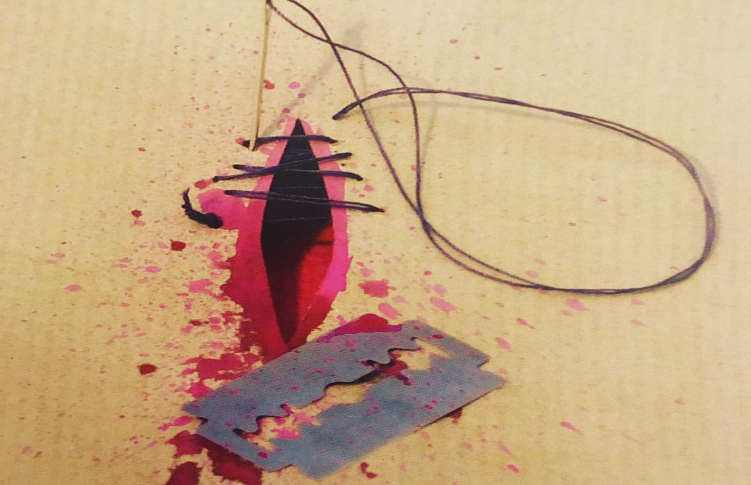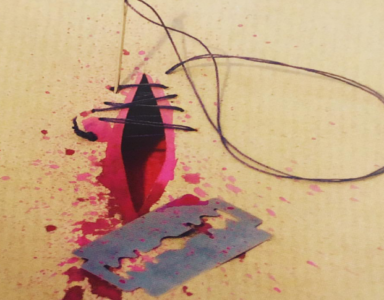Female Genital Mutilation: Religious purity or an Anathema?

Mustafa Nulwala is a strongly opinionated aspiring lawyer. He believes everyone has the right to be every possible thing they wish to be. Apart from being a board game lover, he loves attending plays and cultural programmes. He is an avid reader. He fervently hopes for a gender equal society and believes that most crimes perpetuated by each gender on the other can be reduced and eliminated through a taboo free interaction between men and women. He believes the world needs love, lots of love.
FEMALE GENITAL MUTILATION – RELIGIOUS PURITY OR AN ANATHEMA?
I AM A DAWOODI BOHRA MAN AND I STRONGLY CONDEMN FEMALE GENITAL MUTILATION (FGM)!!
Female Genital Mutilation (FGM), also known as female cutting and female circumcision is defined by the WHO, UNICEF, UNFPA, 1997 as the partial or total removal of the external genitalia or other injury to the female genital organs for non-medical reasons.
Let me tell you about my story as to how I discovered about this odious act of FGM.
During November, 2016, I attended the Osianama Film Festival with my college friends. The theme of the festival for the year was ‘Womanhood’. It showcased a national award winning documentary ‘Pinch of skin’, focusing on the practice of FGM by the Dawoodi Bohra community in India. I was completely horrified after seeing it. I was totally unaware and uneducated about this practice. After the screening, my friends began to inquire and questions started pouring in. I was so embarrassed and ashamed. I was unable to believe that such an abhorrent practice was followed by the Dawoodi Bohra community, which is said to be very well educated and a community with modernistic approach. On my way home, my mind was bewildered and inquisitive to know more about FGM. When I reached home, I enquired about this practice from my mother. She answered vaguely trying to avoid the conversation. With even the little that she told me about it, I found it to be very wrong and unjust to the women of the Dawoodi Bohra community.
I conducted my own research by reading about this on the internet and discussing it with my cousins and this is what I found with my research. FGM is the collective name given to a number of cultural practices that involve the partial or total cutting of female genitals. As a long standing tradition, girls are taken to a strange place and asked to take off their undergarments and spread their legs. Not knowing the fact that someone is going to make a cut on their clitoris and in some cases mutilate more than that and all this is done in the name of growing up. The practice is mostly carried out by traditional circumcisers or daimas. Female genital mutilation has been reported to occur in all parts of the world, but it is most prevalent in the western, eastern, and north-eastern regions of Africa, some countries in Asia and the Middle East and among certain immigrant communities in North America and Europe. In India this practice is widely followed by the members of the Dawoodi Bohra community. The process is carried out by using a blade (not always sanitary) and is called a CEREMONY which happens before the girl hits puberty. It is generally done when the girl is five to nine years of age. The practice of FGM is done surreptiously and in a furtive manner to all the girl children without any consent whatsoever. It is often done without anaesthesia, without any medical supervision and there is a possibility that sometimes the procedure turns horribly wrong. FGM has no health benefits but only harm. Immediate complications include severe pain, haemorrhage, genital tissue swelling, tetanus, shock and even death. Long term consequences can include urinary problems, vaginal problems like discharge, itching, bacterial vaginitis, menstrual problems, and sexual problems, increased risk of childbirth complications, psychological problems like depression, anxiety, post-traumatic stress disorder, etc.
Historically, the practice of FGM in Africa predates Islam and Christianity. The purpose of the practice has been to curtail the sexuality of a girl. In parts of Africa, the entire external genitalia, clitoris, and the labia minora and majora are cut, after which the vaginal passage is stitched up – a process known as infibulation. Bohras cut only a part of the clitoral hood or the prepuce above the glans of the clitoris. The differences in the two procedures has been used as an excuse by the Bohra clergy to differentiate the Bohra practice from that in parts of Africa. Large sections of the clergy are busy cleverly countering the anti-FGM campaign by arguing that what Bohras do is not ‘FGM’ but ‘khatna’, which is clitoral unhooding. They justify the practice by saying that Bohras just prick, nick or cut the prepuce, the small tip of the clitoris. For the first time, 17 women of the Dawoodi Bohra community expressed their discontent on this practice in public domain. They started a campaign to end this practice in the community. A signature petition was launched through an NGO called as Sahiyo which garnered the support of not only the Bohra women but also from women of other communities.
The WHO recognizes FGM as a violation of the human rights of girls and women. It reflects deep rooted inequality between the sexes, and constitute an extreme form of discrimination against women. Since it is carried out on minors it is also a violation of child rights. FGM violates a person’s right to health, security and physical integrity, the right to be free from torture and cruel, inhuman or degrading treatment, and the right to life when the procedure results in death.
The reasons for conducting FGM vary from society to society. In some societies, it is considered necessary to raise a girl properly and to prepare her for adulthood and marriage while in some communities, the practice is embedded in coming-of-age rituals, sometimes for entry into women’s secret societies, which are considered necessary for girls to become adult and responsible members of the society. However, the ugly truth is that this practice is carried out to curb a women’s sexual desires. It is done to prevent marital infidelity and prevent sexual behaviour which is immoral and deviant. In the name of religion, a woman is asked to give away her pleasures. To get religious purity, she is made to go through such a painful act. With the fear of stagnation and social boycott, women are forced into following this practice.
As per the statistics of the UN, currently more than 200 million women and girls alive today are victims of female circumcision. 3 million girls are estimated to be at risk of undergoing procedures every year. In most cases, the girls were cut before the age of 5.
How can anyone do that? From where do the parents gather the guts to do this to their own blood? From where do the family members or community members get the courage of committing such an awful sin? Is the circumciser or daima a human or monster in disguise? For how long will this grievous crime continue? When will our parliamentarians and lawmakers make a law against this? When will our women be treated equally? Here are many such unanswered questions.
Chairperson of the National Commission for Women, Lalitha Kumaramangalam, while accepting the petition against FGM said “This is an infringement of human rights, we are against genital mutilation as a whole purely from a human rights perspective. Just because something is a social norm does not make it right. These are manifestations of different patriarchal norms. I think FGM has very little to do with religion and more to do with patriarchy. “She also said “We do not need to compare ourselves to anyone, even if FGM existed only in India and it will still be a horrible practice.” Finally she said, “We will support speak out on FGM and help them end FGM. I agree with the Chairperson that it is more about patriarchy than religion.
I strongly urge the Government to pass a strict law banning this practice in India. Pressure of law and fear of punishment will be the best way to put a stop to this practice. The ladies of the Dawoodi Bohra community are indoctrinated with this custom, which has been practised for a long time, hence it will take a long time to be stopped. So, I think that it must be continuously opposed by those who are honestly aware of the insidious nature of this practice and how it originated. I do not believe that it is written anywhere in the Quran to violate young girls and mutilate their genitals. So, goodness, morality and respect for these innocent young girls will prevail only if we keep vigilant and aim to eliminate these practices. I think the women deserve to enjoy their bodies and be treated in a manner that respects their ability to bring new life into the world. We should all pledge to save our girls and women and join hands together for a FGM free India. I would like to end my post with a beautiful poem,
 “Grandma was there,
“Grandma was there,
She was one of them
They who hold me down
And with a blade;
Tore me apart
Labia by labia
With my blood dripping like a stream
And my life feeling like a blur
She said;
My own kind did this to me. “
(Poem is taken from www.anastasiaruth.wordpress.com)
SAY NO TO FGM!
Opinions expressed are of the writer.



